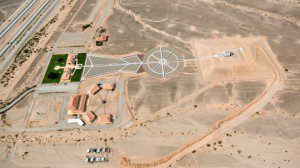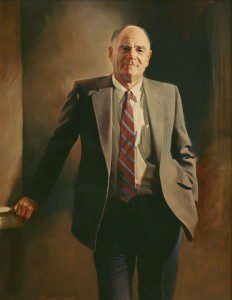Several weeks ago I settled down to my usual Sunday afternoon reading of the New York Times. I encountered one of the more fascinating profiles I’ve read in a while. It opened like this: “One morning in late January, Jacques-André Istel woke up at his home in Felicity, Calif., did 100 push-ups and 125 squats, swam in his elegantly lit lap pool, then went back upstairs, where he took a light breakfast in bed, as has been his custom since his boyhood in Paris. After breakfast, he dressed in a blue shirt and ascot and walked to his office at 1 Center of the World Plaza. It was Istel’s birthday; he was turning 85.” Istel had built the so-called “Center of the World” in nearly thirty years ago on 2,600 acres in the middle of the desert near Yuma, Arizona. I want to draw your attention to this piece for several reasons.

First, it’s a flat-out good read about a really eccentric man. Consider these fascinating details:
- A 21-foot-tall stone-and-glass pyramid marks the center of the world. Nearby is the Museum of History in Granite. The Times says that he researches and writes all the text, sometimes moving through 50 or 60 drafts of a single panel. He began a set of eight monuments — 461 panels total, arranged in a compass rose, with a multilingual Rosetta Stone at its center. On them, he would record the “History of Humanity.” He’s now about a quarter of the way through: the story begins with an etching of the Big Bang and cuts off after a summary of Viking death rituals.
- He was born in Paris in 1929, the third of four children. His father, André Istel, was a distinguished financier — a partner in a couple of brokerage firms who served as an adviser to Charles de Gaulle and French delegate to the Bretton Woods conference, which established the I.M.F. and the World Bank. But he had to flee Paris during the Nazi advance in 1940.
- After moving to the United States, he made an impulsive solo flight across North America, from Vancouver to New York, in a single-engine airplane that he had just barely learned to fly. After a handful of perilous and comic mishaps, covered in local papers along the way, which embarrassed his parents, he finally touched down at LaGuardia with a broken radio. (He landed elsewhere first and called the tower from a pay phone to let them know he was coming.)
- After growing disillusioned as a stock-market analyst in the 1950s, he almost single-handedly popularized parachuting in the United States, founding Parachutes, Inc., which took the activity out of the exclusive domain of the military.
- Not only is Istel not religious; his mother was Jewish. And yet, he went through significant trouble to build this magnificent little chapel on a hill; in fact, he built the hill, too, hiring heavy machinery to push earth out of the flat desert and into a scrupulously engineered, seismically fit trapezoid 35 feet high. Istel, Gaebelein said, can articulate exactly why he felt obligated to build that hill for the church — “I’m a traditionalist, and I believe in protocol and courtesy; if you build a house for a higher power, for God, it should be the highest thing,” Istel would tell me — but he can’t explain why he built the church in the first place.

The second reason is that a startling name—Donn Gaebelein—appears in the profile. Gaebelein is described as a “strait-laced, retired private-school headmaster.” This was his 15th stay at the “Center of the World. He told the Times that this is how he and Norma dodge winters in New York. But there’s more than the pull of warm weather. Gaebelein also told the Times, “You have to live with this place, you have to sleep on this, to get the feel of its power,” he said.
I had never heard of Donn, but I had heard of the unusual surname of Gaebelein, which should be familiar to older evangelicals. After a little digging, I discovered that Donn had been a headmaster at Westminster School in Atlanta. And that, sure enough, he was the son of Frank Gabelein, the founder of the venerable evangelical institution Stony Brook School on Long Island. Frank was also an editor at Christianity Today and Eternity, on the translation committee for the New International Version Bible. Along with Harold Ockenga, Carl Henry, and Billy Graham, Gaebelein was one of the key leaders of the neo-evangelical movement of the 1950s. On the issue of race, Gaebelein came out looking much better than most of those leaders. In 1965 he went down to Alabama to cover the civil rights march from Selma to Montgomery for Christianity Today. He was so compelled by the righteousness of the cause that he joined the march instead!
The Times doesn’t offer much on the relationship between Gaebelein and Istel. We are told that after arriving in New York uprooted from his life in France, Istel enrolled at the Stony Brook School, where “he was thrown into the eighth grade. One teacher gave him comic books instead of textbooks. Every night, he lay in bed weeping.” This must have been where the conservative evangelical Gaebelein befriended the heterodox Istel.
Does anyone know the rest of the story of Istel’s continuing relationship with Gaebelein and Stony Brook?













